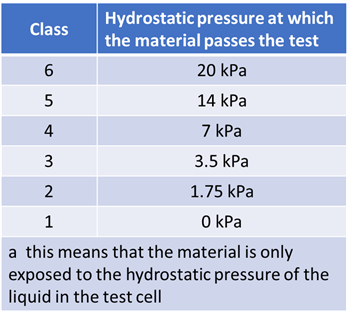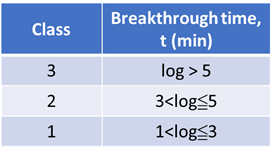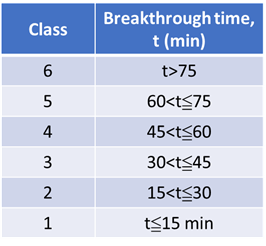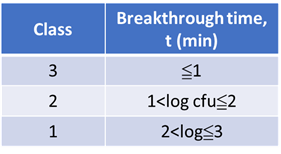Medical Protective Clothing
EN 14126 Protective clothing - Performance requirements and tests methods for protective clothing against infective agents
The protection of persons from contact with biological infectious agents often requires clothing that provides a barrier against the various means for exposure to infectious agents. Infectious agents include different types of microorganisms such as bacteria, viruses, and fungi. Infectious agents can be carried by both liquids (contaminated fluids, liquid imbibed solids, aerosols) and solids (dust particles). These potential routes of exposure led to the investigation and development of four test methods considered representative for the following major risk situations:
-contact with contaminated liquids (ISO 16603 and 16604);
-contact with embedded contaminated solids (ISO 22610);
-exposure to liquid aerosols (ISO 22611);
-exposure to solid particles (ISO 22612).
ISO 16603 Clothing for protection against contact with blood and body fluids — Test method using synthetic blood.
ISO 16603 describes a laboratory test method for measuring the penetration resistance of clothing materials to blood and body fluids. This test method uses a synthetic blood in continuous contact with the material specimen at specified set of conditions using the ISO 13994 test apparatus.
This test method is not always effective in testing protective clothing materials having thick, inner liners which readily absorb the synthetic blood. This test method can also be used as a screening test to determine which time and pressure protocol is appropriate for evaluating the viral-resistance-properties of protective apparel with a more sophisticated barrier test method as described in ISO 16604.
ISO 16604:2004
Clothing for protection against contact with blood and body fluids —Test method using Phi-X 174 bacteriophage
This test method addresses only the performance of materials or certain material constructions (e.g. seams) used in protective clothing. This test method does not address the design, overall construction and components, or interfaces of garments or other factors which may affect the overall protection offered by the protective clothing. It is emphasized that the test does not necessarily simulate conditions that clothing materials are likely to be exposed to in practice.

ISO 22611: Test method for resistance to penetration by biologically contaminated aerosols
This specific test is intended for measuring the resistance of protective clothing materials to penetration by biologically contaminated aerosols. The test method addresses only the performance of materials or certain material constructions (e.g. seams) used in protective clothing and not the design, overall construction and components, or interfaces of garments or other factors that may affect the protection offered by the protective clothing.

ISO 22610: Test method to determine the resistance to wet bacterial penetration
There are numerous examples of situations where bacteria carried by a liquid may migrate through a barrier material in the wet state. The wet penetration of skin flora through a covering material is one example. ISO 22610 is used to determine the resistance of a material to the penetration of bacteria, carried by a liquid, when subjected to mechanical rubbing.

ISO 22612: Test method for resistance to dry microbial penetration
There are numerous examples of situations where bacteria may migrate through a barrier material in the dry state carried by organic or inorganic particles. The dry penetration of bacteria-carrying skin scales through an operating gown or a clean air suit is one example. Penetration through a packaging material during storage is another.

Performance requirements for seams, joins and assemblages
Seams, joins and assemblages of protective clothing against infective agents shall fulfil the requirements specified in the relevant clauses of EN 14325 Seam strength shall be classified according to 5.5 of EN 14325.
Whole suit requirements
Protective clothing against infective agents shall fulfil the relevant requirements of EN 340 and the whole suit requirements specified in the relevant standard for chemical protective clothing.
The materials and design used shall not cause skin irritation nor have any adverse effect to health.

